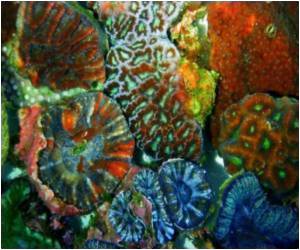Millions of corals in the north of the Great Barrier Reef died quickly from heat stress in March and since then, many more have died more slowly.

‘Six months after the peak bleaching, the corals now have either regained their algal symbionts and survived, or they have slowly starved to death without the nutrition the algae provide to them.’





Teams of researchers from the ARC Centre of Excellence for Coral
Reef Studies at James Cook University are returning to the same 83 reefs
that they surveyed underwater in March this year at the height of the
bleaching event."Millions of corals in the north of the Great Barrier Reef died quickly from heat stress in March and since then, many more have died more slowly," says Dr. Greg Torda whose team recently returned from re-surveying reefs near Lizard Island.
The scientists have today released unique footage showing the extent of the bleaching in March and April, which was most severe in the northern 700km section of the Great Barrier Reef. Reefs in the southern half of the reef were only lightly bleached and remain in good condition.
"Six months after the peak bleaching, the corals now have either regained their algal symbionts and survived, or they have slowly starved to death without the nutrition the algae provide to them," says Torda.
"On the reefs we surveyed close to Lizard Island, the amount of live coral covering the reef has fallen from around 40% in March, to under 5% now.
Advertisement
"On top of that, snails that eat live coral are congregating on the survivors, and the weakened corals are more prone to disease. A lot of the survivors are in poor shape."
Advertisement
"There is still close to 40% coral cover at most reefs in the central Great Barrier Reef, and the corals that were moderately bleached last summer have nearly all regained their normal color."
The final death toll from the bleaching in the north will not be known until all surveys are completed in mid-November, but it is already clear that this event was much more severe than the two previous bleachings in 2002 and 1998.
Source-Eurekalert









